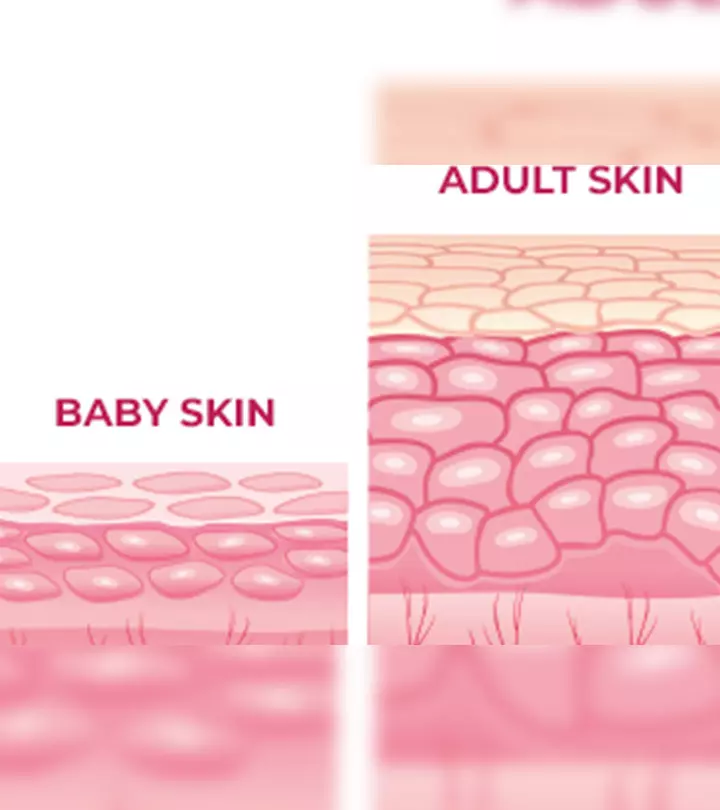
credit: www.medscape.org
Most babies have such soft and flawless skin it’s hard not to envy them sometimes. The reality is, baby skin is extremely vulnerable and sensitive –just like almost everything else about them. (1) Understanding some key facts about your baby’s skin will make a critical difference in choosing the best products for her.
Baby Skin Is Not Like Ours
Baby skin, unlike ours, is very weak and underdeveloped. The reason baby skin is so soft, in fact, is because it’s been completely protected in the safety of the womb. Once exposed to the harsh world outside it becomes extremely sensitive to the surrounding toxic environment, and is more easily irritated than adult skin. A baby’s skin barrier is also much thinner than ours. This means that any chemicals or ingredients you put on your baby’s skin will be absorbed into his bloodstream in a much greater concentration than if you put the same chemicals on your own skin. (2)
Scientists, doctors and other experts have not yet agreed on exactly how high this amount is. A conservative estimate is that up to 50% of whatever product goes onto a baby’s skin is ultimately absorbed into her bloodstream. The real amount may be even higher, but 50% is still a sobering number. Of course, not all ingredients are equal. Some are totally harmless, but others (such as phthalates) have been linked to serious health issues including hormonal development. (3)
Take Control of What Products You Buy and Use
One of the top things you can do to keep your baby safe is to carefully screen all topical products before using. Be especially vigilant with “leave on” products (lotions and sunscreens) as well as products you put on your baby frequently (shampoos and soaps). The greater the surface area these products cover and the longer they stay on your baby’s skin, the more they will be absorbed into the bloodstream.
Here’s a good rule of thumb: make sure the ingredients in your baby products are gentle enough to be broken down and expelled. Many synthetic ingredients – as well as some natural ones – aren’t capable of this and as a result, particles of these ingredients remain long-term in the body. The effects of these chemical remnants are unknown at best, and hazardous at worst. Sulfates, for example, have been linked to asthma.
A good starting point is to focus on products that have as many natural ingredients as possible, as these are less likely to remain in your baby’s system and cause harm. Of course, “natural” alone is not a sufficient enough label – plenty of things in nature, such as oleanders and poison ivy, are toxic. But it’s still a step in the right direction.
Think ‘Edible’
The most logical way to find safe ingredients is to consider the fact that your baby will absorb them into his bloodstream – and so look for ingredients that will be harmless and easily processed. Thinking along these lines, edible is a sensible factor to consider for product ingredients. After all, if an ingredient is safe enough to eat, then there’s no need for you to worry about her body being able to process it, right? “Edible” means an ingredient has either nutritive value (think food) or is used as an additive to food. Either way, it’s gentle on the body and can be easily broken down and expelled.
Surprisingly not many baby care brands on the market have emphasized “edible ingredients” as a criterion for their standards. Babyology is one exception – they claim 100% of the ingredients in their products are edible. At this time, they are probably the best option to go with if you are going the edible route and looking to err on the side of caution. If you want, you can check out their products or reviews in Amazon.
As you look for the best products for your little one, remember that knowledge is power: the more you understand the ingredients on the label of a personal care product – regardless of whatever is advertised on the front – the easier it will be for you to make the safest, smartest choices.













